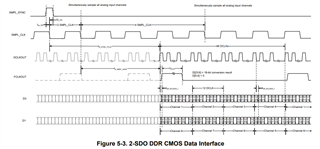Other Parts Discussed in Thread: ADS8568, ADS9813EVM, ADC-PHI-PRU-EVM, ADS9813, TSWDC155EVM, ADS9817EVM, TMDS243EVM, TMDS64EVM, TMDSHSECDOCK, TMDSCNCD263
Tool/software:
Dear TI Team,
we are reworking an older design that uses FPGAs and ADCs and stumbled across ADS9811 and ADS8568. For the ADS8568 we were assured that the combination of a Sitara microcontroller and the ADC could work. As we are forced to increase the ADCs sampling rate, we also would like to have the possibility to use switch to a faster ADC as the ADS9811. Is there any possibility to connect and properly use ADS9813EVM in combination with ADC-PHI-PRU-EVM and TMDS243GPEVM?
best Regards,
Claus


